Electrum, the home electrification marketplace behind platforms for major automakers, has partnered with Nissan to launch the NISSAN ENERGY Marketplace nationwide. The timing is critical: federal EV charger incentives expire September 30, 2025, and solar tax credits end December 31, 2025, a tightening deadline for homeowners nationwide.
In an exclusive interview with Michael Kahn, publisher of The Weekly Driver, Electrum CEO Max Aram explained in-depth how the company’s new partnership with Nissan will help homeowners, and Nissan EV owners, simplify home electrification.
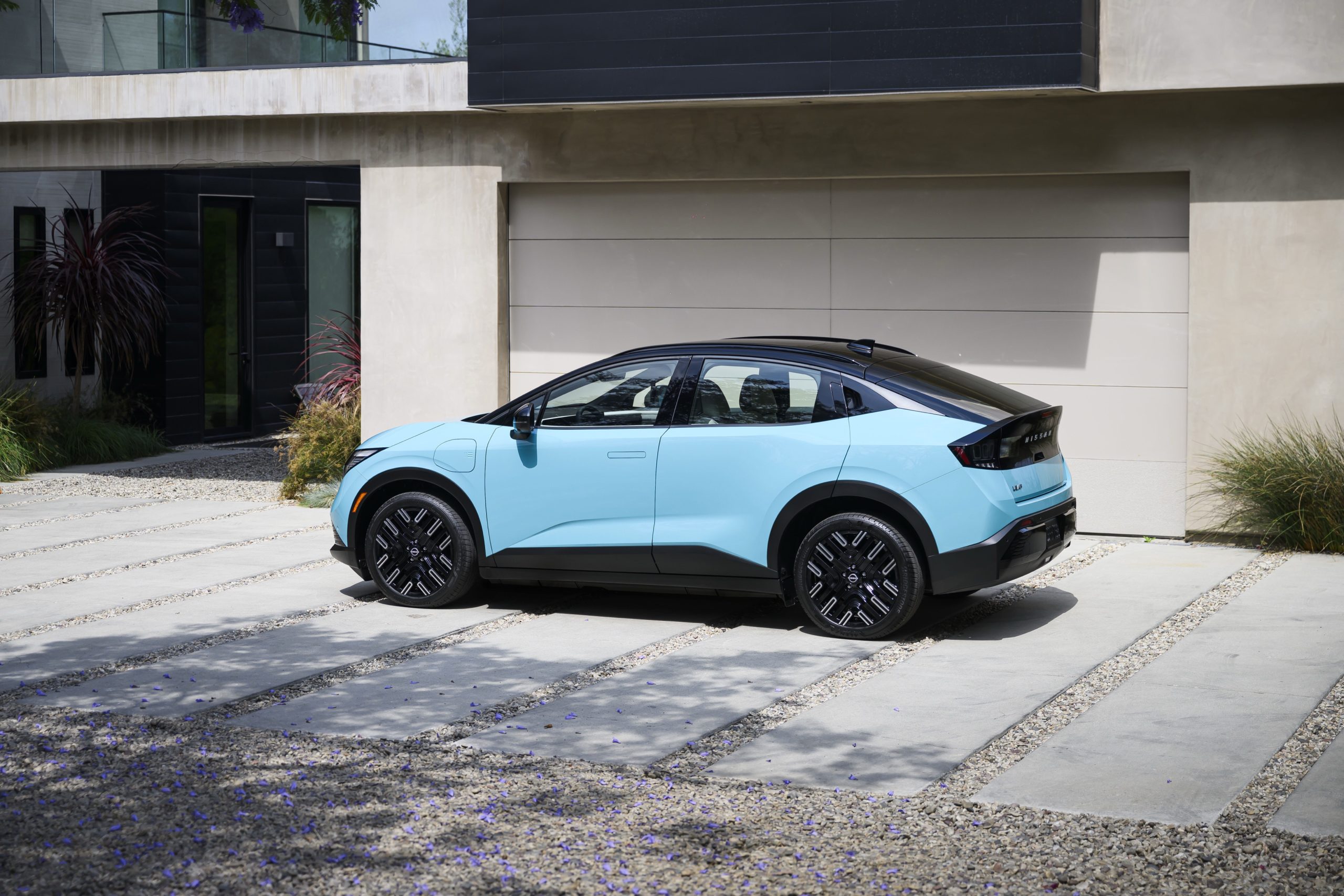

“We are thrilled to bring our home electrification expertise to Nissan and support their EV owners on the path to a fully electrified lifestyle,” said Max Aram, CEO of Electrum. “Together, we are breaking down the barriers to home electrification, making it easier than ever for Nissan customers to harness clean energy and take charge of their energy future.”
The new NISSAN ENERGY Marketplace, available at nissanenergymarketplace.com, streamlines the home electrification process by offering a comprehensive solution for purchasing and installing EV chargers, rooftop solar panels, energy storage systems, and other electrification products and services.
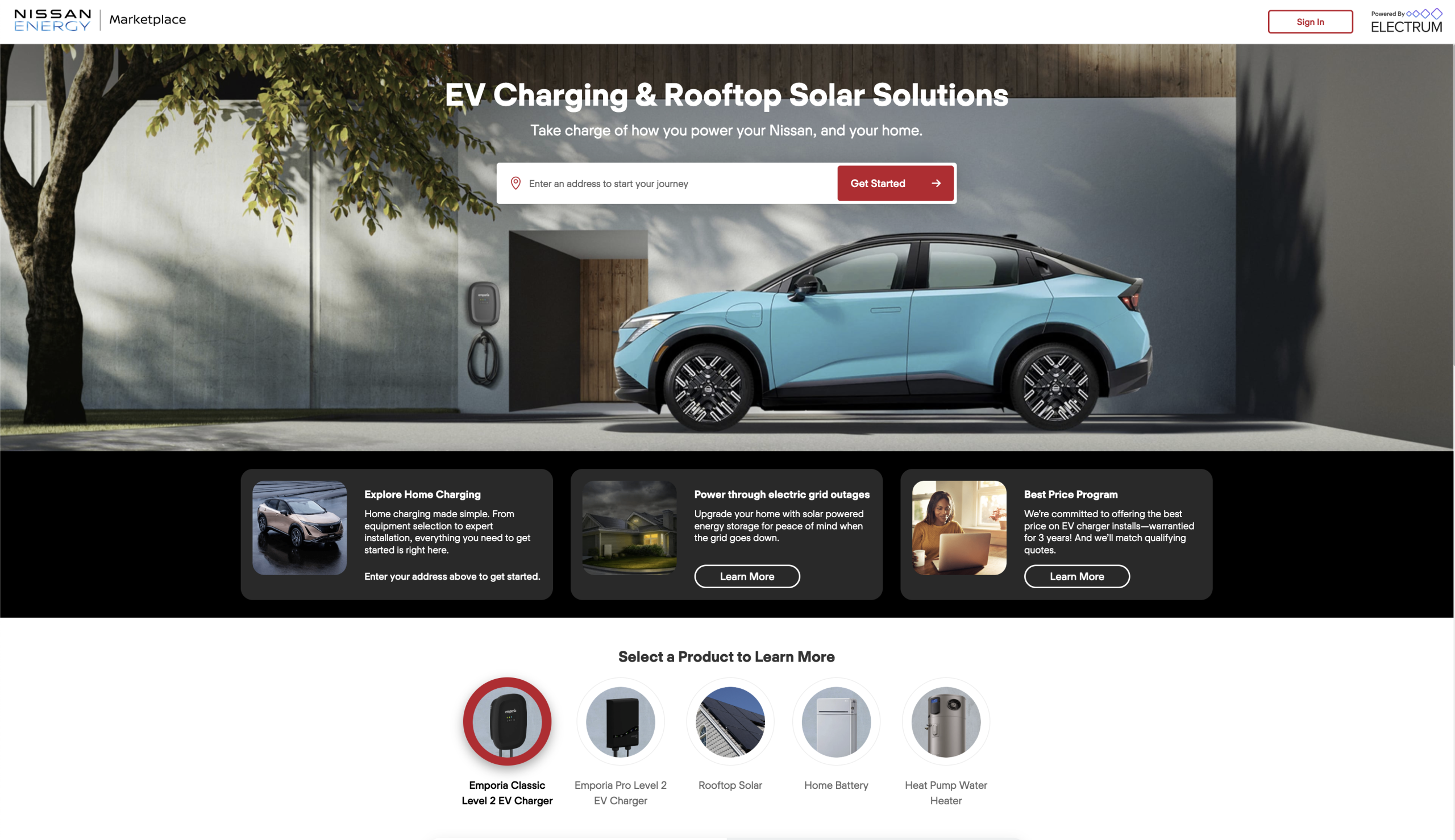

The platform arrives as Nissan prepares to launch the all-new 2026 LEAF later this year, marking a complete transformation of America’s pioneering electric vehicle.
Aram emphasized the urgency homeowners face in capitalizing on current federal incentives. “We have seen a massive jump in the volume of registration on the platform with the customers who come to us, to get their EV charging or solar and battery… every one of the verticals,” he explained during our exclusive interview. “EV charging incentives are expiring at the end of September and solar tax incentives are going away.”
The timeline is particularly critical for homeowners considering installations. “The system needs to be installed and fully deployed by the end of the year to qualify for tax credit,” Aram noted. “So that’s driving a huge, volume of customers coming to us.”
Electrum’s platform has supported tens of thousands of homeowners on their electrification journey and currently powers more than a dozen branded marketplaces for leading utilities and global automakers, including Hyundai, Genesis, Honda, and Acura.
One of Electrum’s key differentiators lies in its sophisticated approach to incentive optimization. “When customers register on the platform, they provide their address and we have a database of every incentive, in every zip code in the country,” Aram revealed. “We help the customers to learn about everything that’s available in their zip code to make sure that they can take advantage of every incentive.”
The platform’s Energy Advisors provide unbiased guidance throughout the electrification process, helping homeowners understand the latest home energy technologies, maximize available incentives, and design tailored solutions that fit each household’s unique energy needs and budget.
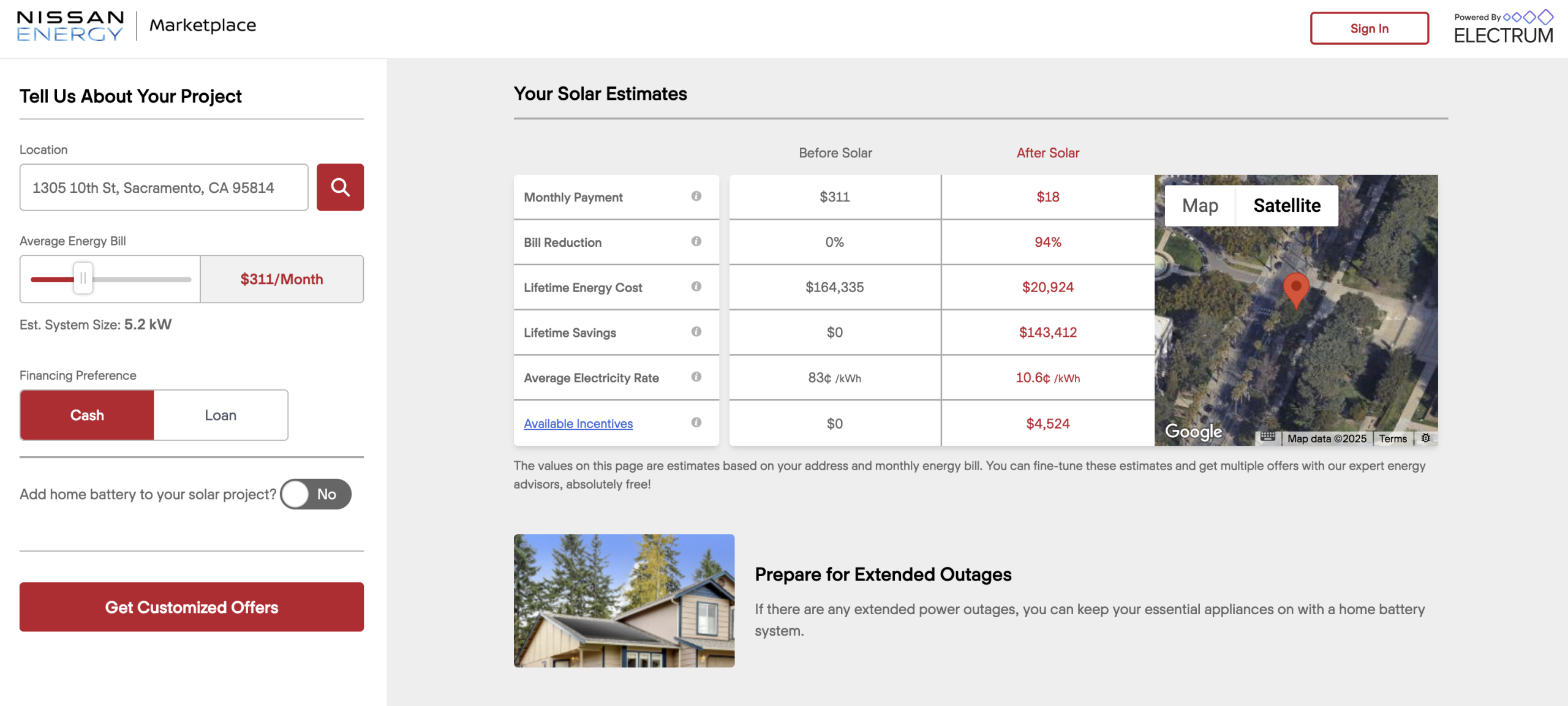

Nissan customers benefit from this personalized experience through Electrum’s concierge service, which includes dedicated customer support to help evaluate bids from Electrum’s trusted network of pre-vetted contractors nationwide.
“At Nissan, we’re building more than electric vehicles — we’re shaping a smarter energy future,” said Jonathan Miller, Director of EV Transformation at Nissan U.S. “With the NISSAN ENERGY Marketplace, customers can enhance their EV ownership experience with tools and support tailored to each household’s unique needs.”
Aram’s journey to this moment began with a clear mission over a decade ago. “Day one, our vision was becoming a home electrification platform. We started on the hardest vertical to figure out; solar panels,” he reflected. With solar figured out, Electrum was able to move onto integrating energy storage verticals.
This strategic approach has proven prescient as the market has evolved. Bloomberg projections that Aram referenced show the EV market continuing its upward trajectory despite policy uncertainties.
“The latest projections that Bloomberg put out there project 4 million plus EV sold in 2030, that’s 27% market share,” he noted. “So it’s tripling from what it was last year. The market is going to grow, but I think it’s gonna be harder to sell EVs, which means that automakers and all the stakeholders need to get creative on getting customers over the finish line.”
The partnership addresses a fundamental challenge in EV adoption. Aram cited industry research showing that home charging represents the cornerstone of electric vehicle ownership. “80% of the charges happens at home, which means all the stakeholders, including the automakers and ecosystem players, need to make it easier for homeowners to adapt electrification products at home,” he explained.
“As soon as you plug the EV in the house, it becomes the largest load in the household and potentially increasing your electricity cost by 40%,” Aram warned. “In order to address that, you need solar and energy storage to make sure that the cost is fully optimized.”
This holistic approach to home electrification represents a strategic necessity as the market matures. “80% plus of the EV buyers today are first time buyers, which means that it’s very important to deliver a happy ownership experience to these customers to make sure they’re repeat buyers,” Aram emphasized.
The NISSAN ENERGY Marketplace launches in perfect alignment with Nissan’s broader electrification strategy.
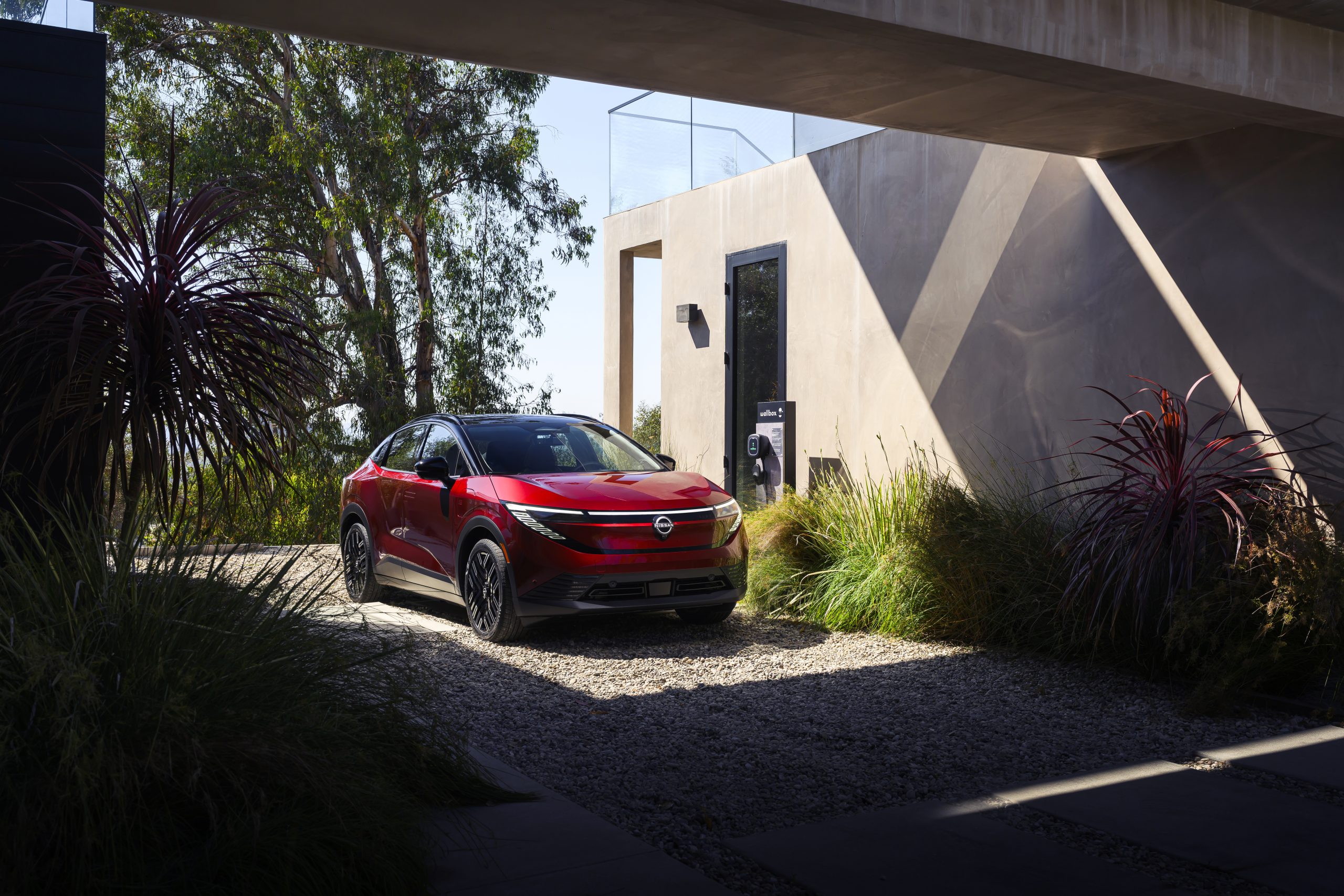

Nissan’s all-new 2026 LEAF represents a complete reimagining of the pioneering EV, transforming from a compact hatchback into a sleek crossover with up to 303 miles of range. Built on Nissan’s innovative AmpR Medium platform, the 2026 LEAF features front-wheel-drive configuration with choice of 52 kWh or 75 kWh battery options.
The new LEAF includes liquid-cooled battery thermal management, compatibility with the North American Charging Standard (NACS) for access to Tesla Superchargers, and support for up to 150 kW DC fast charging. These improvements address previous limitations while positioning the LEAF as a compelling option for mainstream EV adoption.
The marketplace complements Nissan’s broader NISSAN ENERGY initiative, which includes the NISSAN ENERGY Charge Network providing seamless access to over 90,000 public charging stations nationwide. This approach ensures Nissan customers have solutions for both home and public charging needs.
Electrum’s contractor network represents a carefully curated ecosystem designed to ensure quality installations while maintaining competitive pricing.
The platform walks customers through online education and a simple registration process that creates projects for certified, vetted installers to place bids on.
After a set period, Electrum’s proprietary algorithm selects the top three bids, presented in a user-friendly format that allows homeowners to understand the advantages of each option.
Beneath the headline features of stackable rebates, vetted contractor networks, national reach, Electrum is quietly leveraging artificial intelligence to revolutionize how Americans electrify their homes and vehicles.
Max Aram underscored this evolution in our interview, explaining: “Achieving our vision of 3-click installs hinges on the significant investments we’ve made in AI infrastructure.” Over years of powering branded marketplaces for major utilities and automakers, Electrum has amassed a trove of hundreds of thousands of custom home energy solutions, millions of quotes, and a quarter million hours of real conversations with homeowners.
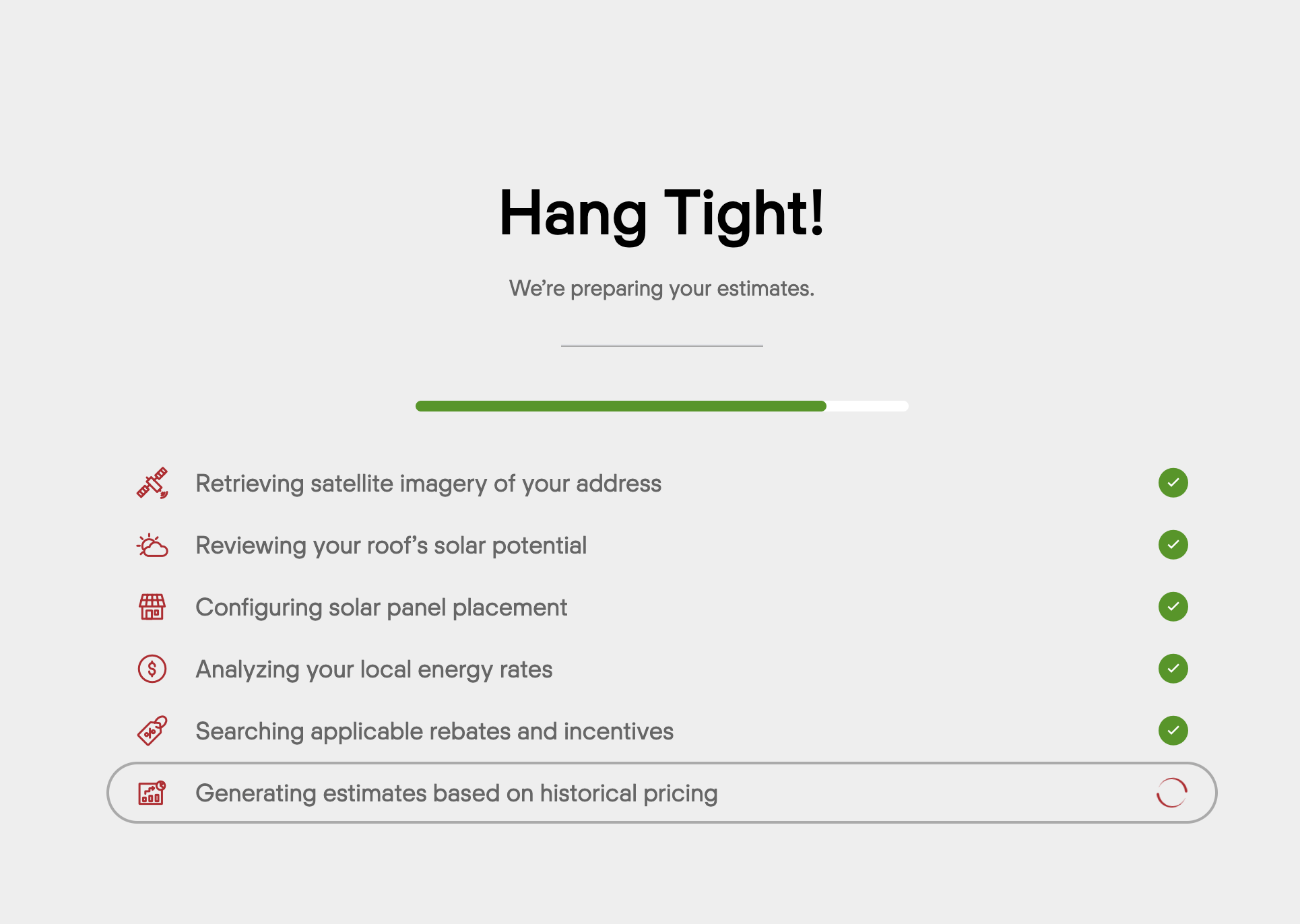

It’s this rich dataset that informs Electrum’s next step: deploying AI to automate and streamline every aspect of the electrification journey.
“By the end of this year, homeowners will be able to reach out to Electrum and get any electrification question answered instantly, 24/7,” Aram explained. The approach is twofold:
The frontend for homeowners: AI-driven virtual advisors will answer technical and incentive questions on demand, providing immediate clarity on eligibility for rebates, installation timelines, and custom energy packages—even as local and federal policies shift.
The backend for contractors: Automation will extend to site surveys, permit plan generation, materials ordering, and dynamic crew scheduling.
“We’re investing into automating critical installation processes, from eliminating site visits to generating permit plan sets, ordering materials, and scheduling crews,” Aram shared. This will enable vetted installers to take on more projects quickly, lowering wait times and expanding access for every customer, not just those in major metros.
Already, Electrum’s platform stands apart with its real-time, location-based incentive engine. As outlined in the follow-up message, the platform aggregates rebates and incentives from a mix of federal and state agencies, utilities, municipalities, and automaker partners.
For a homeowner in Venice, CA, for example, a quote for EV charger installation at $933 surfaced a local rebate of up to $1,000—fully offsetting the cost.
For Los Angeles Department of Water and Power customers, ChargePerks CA managed charging program also provides a $50 enrollment bonus and up to $700 in potential annual savings, with Virtual Power Plant enrollments being built directly into the checkout process.
Rooftop solar and battery installations also benefit from an AI-supported incentive mapping process.
The federal tax credit of 30% remains the anchor, but state programs such as SGIP in California are also displayed, with eligibility determined according to address, income, or utility rate. Electrum’s marketplaces have already supported a large number of successful SGIP applications, making advanced home energy storage accessible to a broader range of Californians.
Recent legislation further accelerated consumer demand. In the days following the enactment of the OBBB Act on July 4, Electrum recorded a 46% surge in inquiries for EV chargers, solar, and storage.
As Aram described, “That’s roughly $20,000 in incentives potentially expiring this year.” The timeline is tight: homeowners must install EV chargers and take delivery by September 30 to qualify for the $7,500 EV tax credit, and solar or battery systems must be fully operational by December 31 to claim the 30% tax credit, worth over $12,500 combined in many cases.
Aram sees AI as the keystone to unlocking mass adoption as America’s electrification needs scale. “Over the next five years, 10–15 million Americans will buy EVs, and they’ll all need smart chargers at home. Electrum will be the fastest and most affordable way to get them installed, and AI is the key to unlocking that future.”
For homeowners, the guidance is clear: “With these deadlines approaching, our message is simple: Don’t wait.”
As federal programs wind down, Aram remains optimistic about continued market growth through alternative mechanisms. The EV market’s fundamental drivers remain strong, making electrification accessible and affordable for American homeowners. These drivers are supported by improving technology, expanding charging infrastructure, and evolving consumer preferences.
Electrum’s partnership with Nissan exemplifies the transformation occurring in how automakers approach comprehensive EV ownership support.
By combining data, automation, and expertise from successful partnerships, including the new Nissan ENERGY Marketplace, Electrum’s technology is poised to help millions of homeowners navigate the next phase of electrification, turning what was once a complex, paperwork-laden process into a seamless, AI-driven experience that puts autonomy and affordability in the hands of consumers.
The competitive marketplace structure ensures customers receive optimal economics for their home electrification projects while maintaining product neutrality, meaning customers can choose from a variety of equipment and brand options that suit their specific needs.
For Nissan customers ready to embrace a fully electrified lifestyle, the NISSAN ENERGY Marketplace offers a streamlined path forward, backed by Electrum’s proven track record of supporting tens of thousands in their home electrification journey. Homeowners can confidently install the infrastructure needed to support their vehicles while extending their commitment to sustainability throughout their homes.
Article Last Updated: July 31, 2025.


